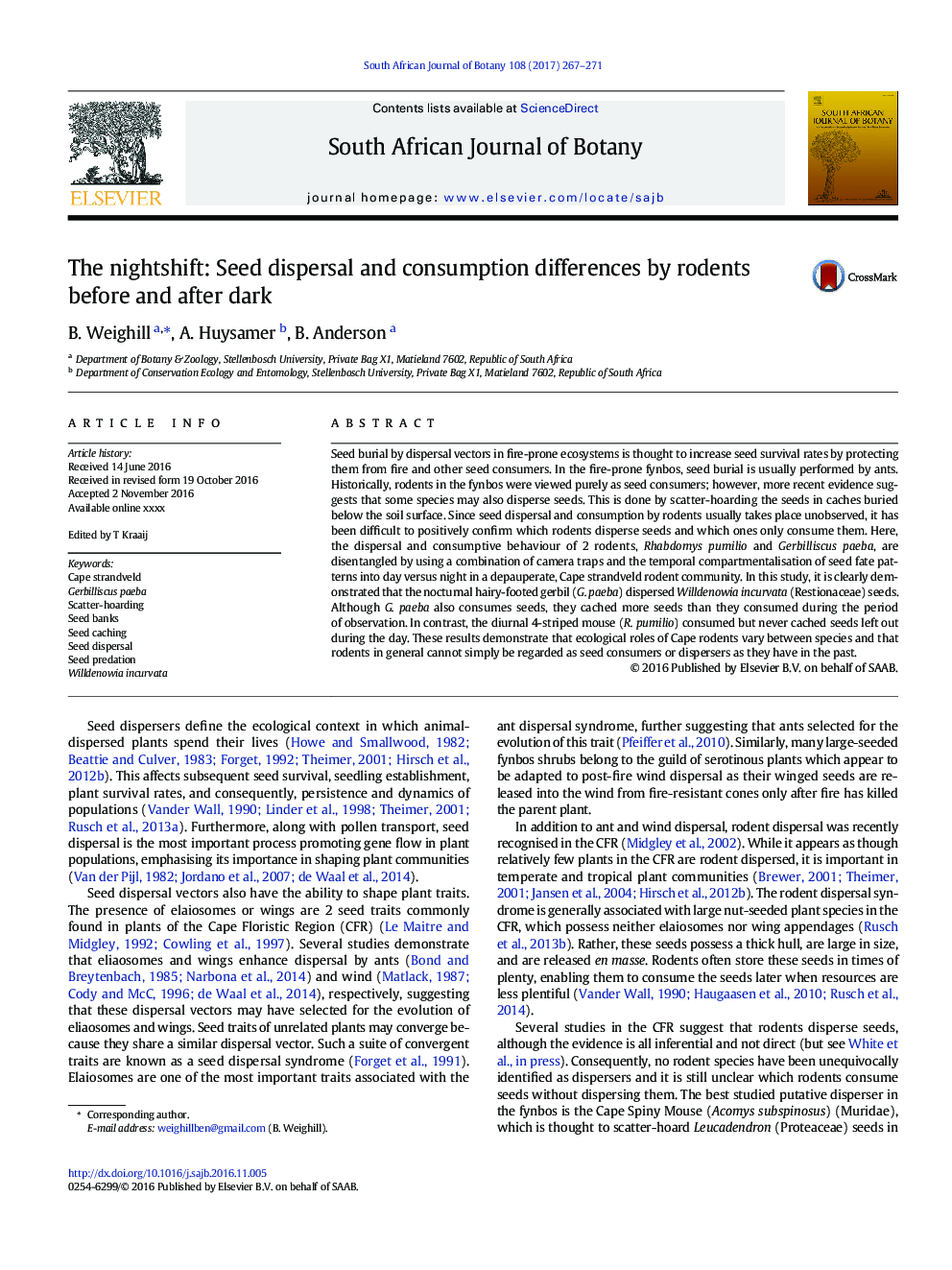| Article ID | Journal | Published Year | Pages | File Type |
|---|---|---|---|---|
| 8882467 | South African Journal of Botany | 2017 | 5 Pages |
Abstract
Seed burial by dispersal vectors in fire-prone ecosystems is thought to increase seed survival rates by protecting them from fire and other seed consumers. In the fire-prone fynbos, seed burial is usually performed by ants. Historically, rodents in the fynbos were viewed purely as seed consumers; however, more recent evidence suggests that some species may also disperse seeds. This is done by scatter-hoarding the seeds in caches buried below the soil surface. Since seed dispersal and consumption by rodents usually takes place unobserved, it has been difficult to positively confirm which rodents disperse seeds and which ones only consume them. Here, the dispersal and consumptive behaviour of 2 rodents, Rhabdomys pumilio and Gerbilliscus paeba, are disentangled by using a combination of camera traps and the temporal compartmentalisation of seed fate patterns into day versus night in a depauperate, Cape strandveld rodent community. In this study, it is clearly demonstrated that the nocturnal hairy-footed gerbil (G. paeba) dispersed Willdenowia incurvata (Restionaceae) seeds. Although G. paeba also consumes seeds, they cached more seeds than they consumed during the period of observation. In contrast, the diurnal 4-striped mouse (R.pumilio) consumed but never cached seeds left out during the day. These results demonstrate that ecological roles of Cape rodents vary between species and that rodents in general cannot simply be regarded as seed consumers or dispersers as they have in the past.
Related Topics
Life Sciences
Agricultural and Biological Sciences
Agronomy and Crop Science
Authors
B. Weighill, A. Huysamer, B. Anderson,
